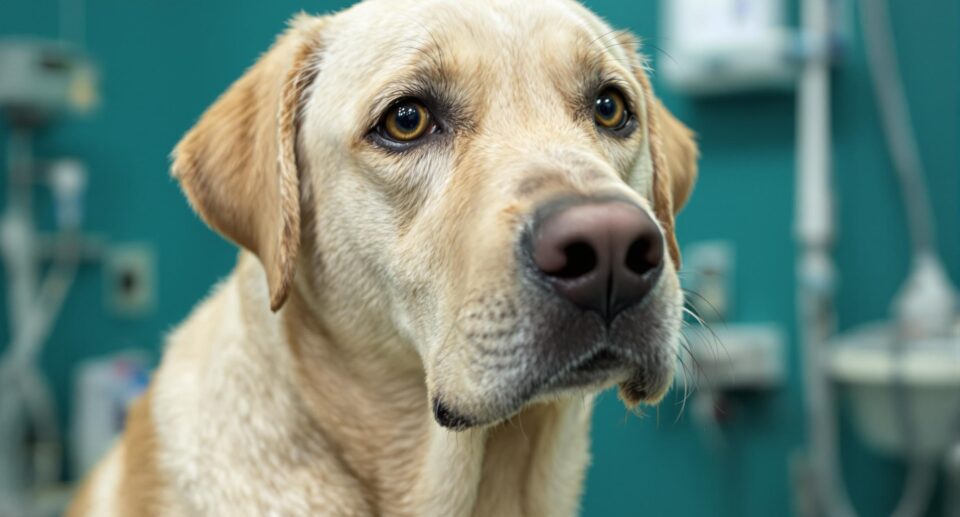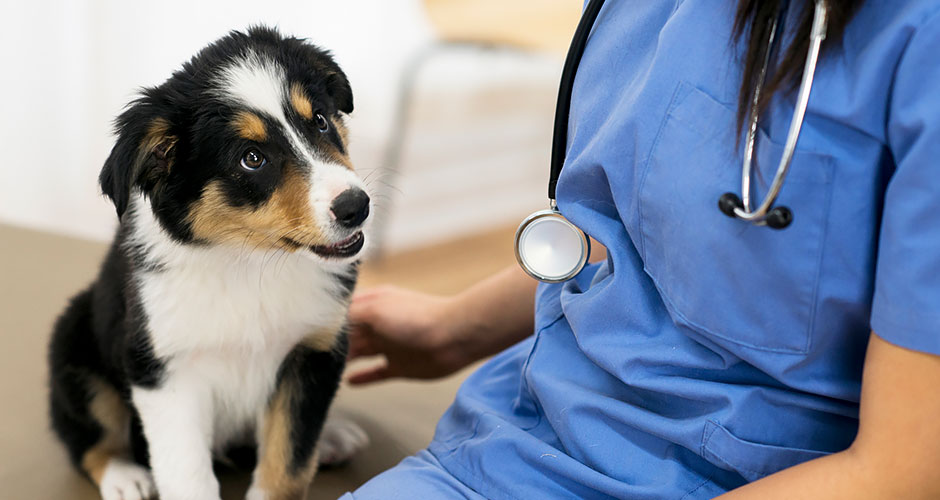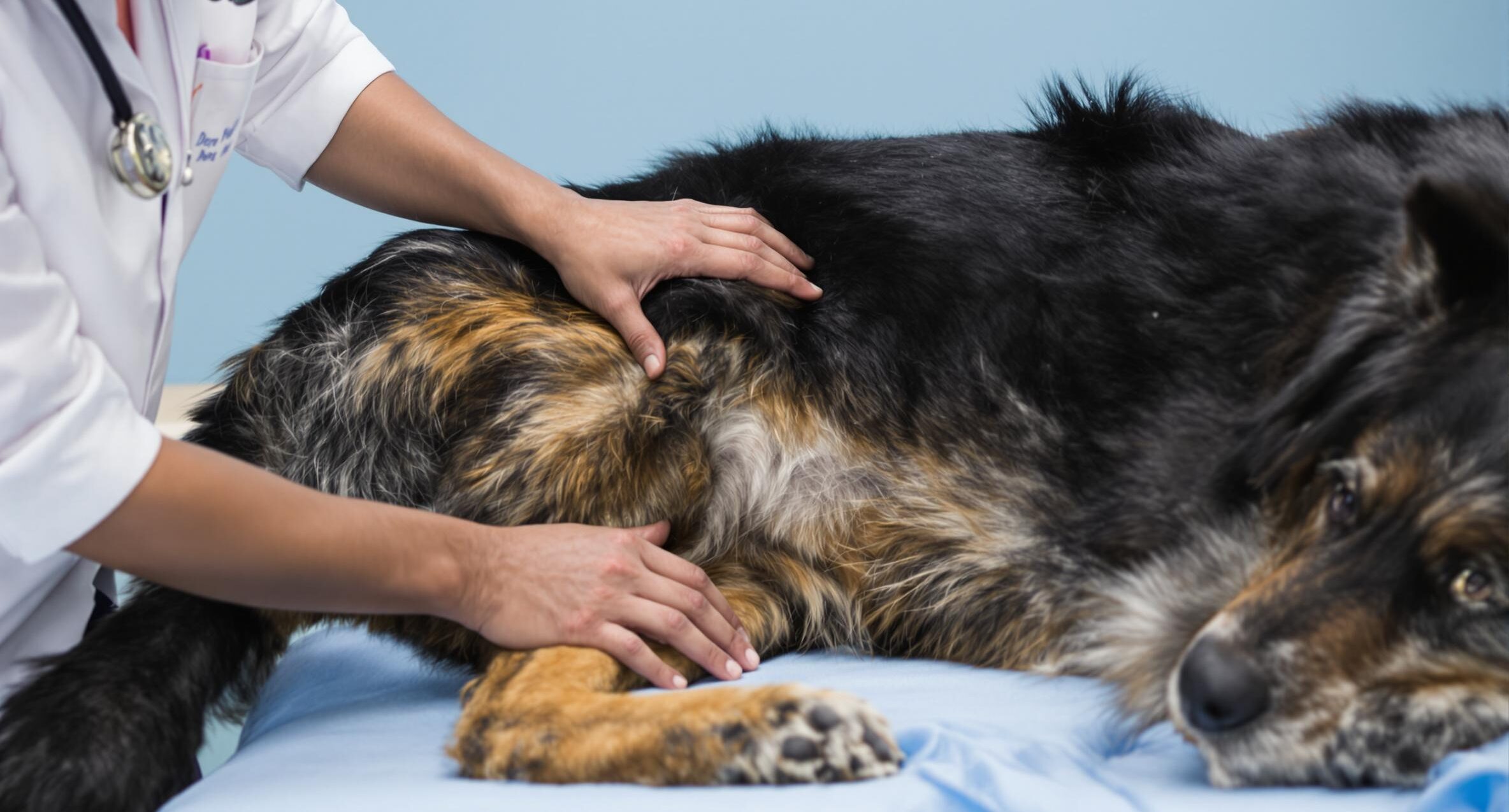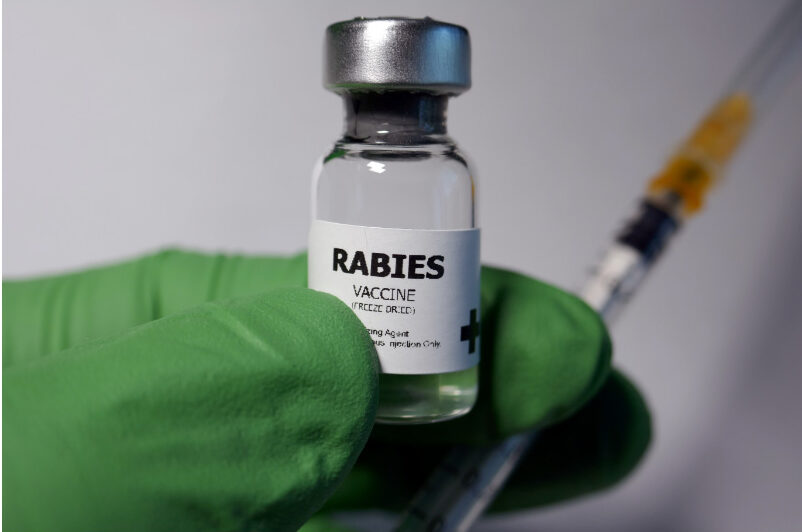What Dog Parents Should Know About Hip Dysplasia
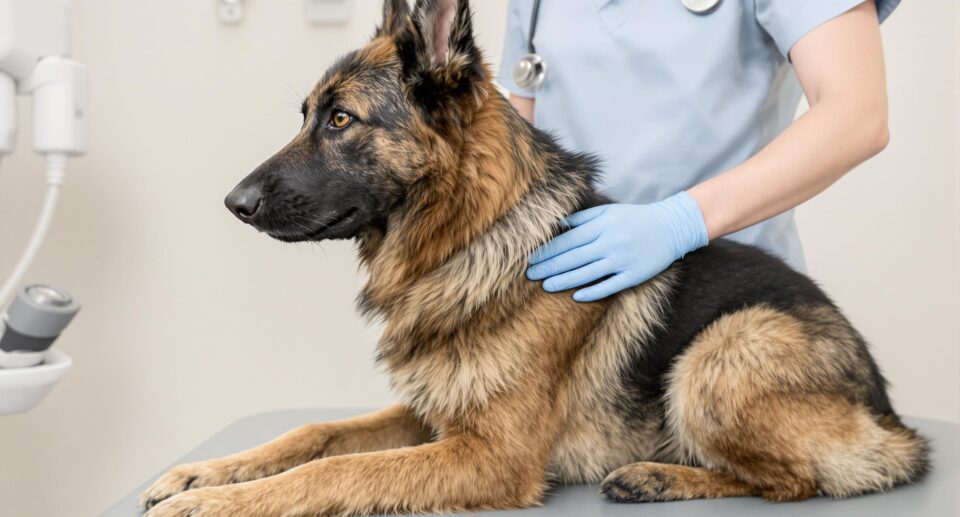
Hip dysplasia, a painful malformation of the hip joint, is most common in large breed dogs like German Shepherds, Great Danes, Saint Bernards, Golden Retrievers, and Labrador Retrievers, though it’s seen in dogs of all breeds and sizes, as well as in cats. In recognition of Animal Pain Awareness Month, learn about the risk factors, symptoms, and available treatment options for cats and dogs with hip dysplasia.
What Is Hip Dysplasia in Pets?
Normally, the hip joints are made up of a ball and socket. The ball at the top of the femur should fit securely into the socket in the hipbone. Between the ball and socket, there is connective tissue that helps the joint glide smoothly as your pet moves.
In pets with hip dysplasia, the socket may be shallow, or the femoral head or “ball” may not be perfectly round. The ball may slip out of the socket, and the loose, insecure connection can cause friction as the pet moves. The friction causes the breakdown of connective tissue. The body is constantly rebuilding joint tissue, but if a pet is experiencing a lot of friction in their hip joint, the tissue with break down faster than their body can rebuild it, causing the bones to grind.
Diagnosis and Symptoms
Hip dysplasia can be seen on an x-ray before the pet develops any symptoms. Pet parents of at-risk large breed puppies can have their pup’s hips checked by their vet and, if needed, seek early intervention treatments to prevent symptoms from occurring in the future.
Symptoms in dogs and cats typically manifest as:
- Difficulty climbing furniture
- Limping
- Licking at hip area
- Crying out when hips are touched
- “Bunny hopping,” or walking or running with hind legs close together
- Swaying while walking or running
- Trouble squatting to urinate or defecate
- Decrease in muscle mass in hind legs
- Increase in shoulder muscle mass to compensate weak hind end
What Causes Hip Dysplasia in Pets?
Hip dysplasia is an inherited malformation that’s usually present at birth. It affects around 15% of all dogs, and for at-risk breeds, it can affect over 50% of individuals to some degree. Those with borderline to mild grade dysplasia may never show symptoms.
As for cats, hip dysplasia presents differently, with symptoms becoming apparent later in life, and typically not as noticeably as seen in dogs. For domestic shorthairs, it affects around 5% of the population but is as common as every 1 in 5 cats for certain breeds, including Maine Coons and Himalayan and Persian breeds.
Breeders of large breed dogs and certain cat breeds should have their breeding stock screened to ensure they meet Orthopedic Foundation for Animals (OFA) health testing standards.
Hip dysplasia can be caused by abnormal growth in puppies and kittens. The ball and socket need to grow at the same rate to ensure a snug fit. Large breed puppies, especially, are prone to bone deformities caused by rapid growth, obesity in puppyhood, fractures, and high impact or excessive exercise. Early spaying and neutering have also been linked to an increased risk of bone and joint issues.
How Is Hip Dysplasia Treated?
If caught early while your pet is still young, hip dysplasia can be treated before it causes symptoms.
Your pet can be fitted with a brace to help keep the hip joints in place and guide them into normal positioning during growth. A brace can also help reduce pain in older, symptomatic pets.
Dogs and cats can take joint supplements at any age to help reduce inflammation and support joint healing. For some pets, joint supplements and pain medications are enough to manage mild symptoms. In others, surgery will be the only way to restore mobility and eliminate pain.
For pre-symptomatic puppies around 3-4 months old, a procedure called juvenile pubic symphysiodesis (JPS) may be recommended. In this relatively quick and simple procedure, a growth plate in the hip is altered in a way that prevents the pelvis from growing wider. As a result, the socket will rotate as the dog grows, keeping the femoral head firmly in place.
For dogs between 20 weeks and 10 months, the hip can be corrected with a triple or double pelvic osteotomy. The pelvic bone is cut in two or three places, rotated, and stabilized with a plate and screws to keep the joint in place.
A femoral head and neck ostectomy (FHO) is a procedure in which the femoral head or “ball” is removed entirely. Over time, the empty socket is filled with scar tissue that acts as a false joint, allowing for pain-free movement. It works best for small cats and dogs, especially active pets, whose muscles surrounding the joint will help provide support.
Lastly, a total hip replacement (THR) is the most expensive and invasive, but also most effective option, especially for fully grown, large breed dogs. The ball and socket are removed, then replaced with plastic or metal parts.
Hip surgeries have a high rate of success and can eliminate complications due to hip dysplasia. Over time, loose hip joints can become arthritic, develop scar tissue, and bone spurs, and lead to complete loss of mobility. If your pet is an at-risk breed, a large dog, or has started showing symptoms of hip pain, see your veterinarian for an evaluation.

